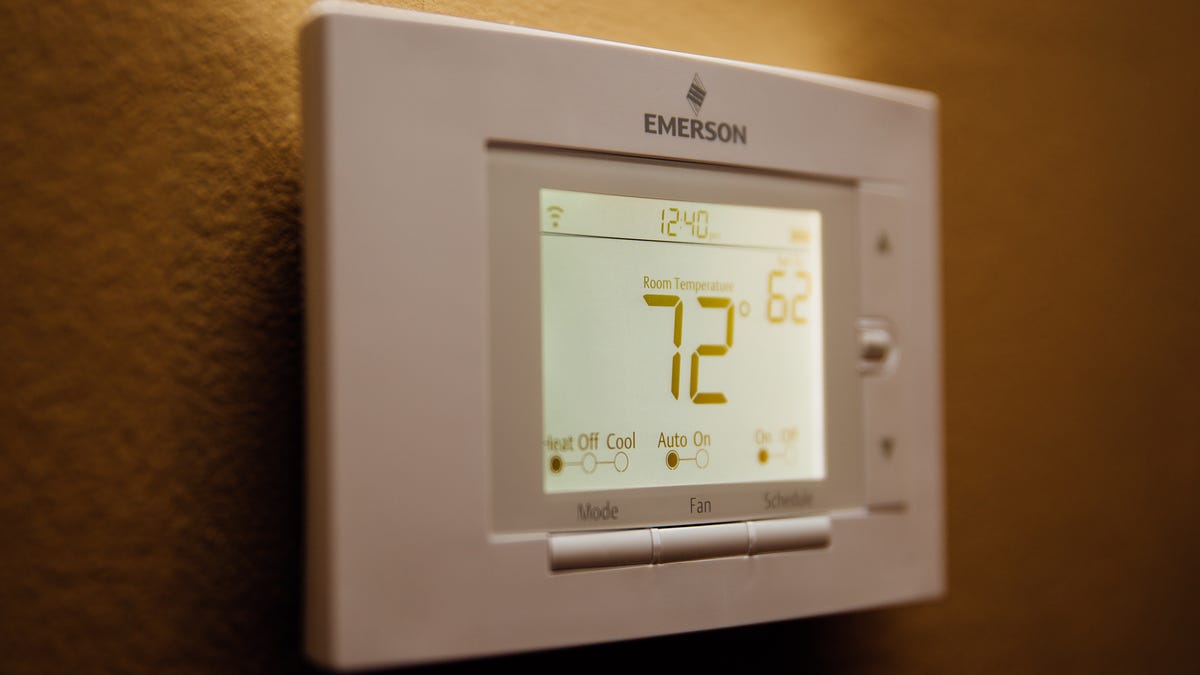What to do when your thermostat is wrong
Feeling hot, but your thermostat says it's cool? It's not just you.

You step inside to escape the unbelievable heat, but your home is not the cool refuge you were hoping for. Instead, your air conditioner runs constantly, your energy bill skyrockets and you're still left sweating your tuchus off all summer long.
Before you sign a check for an expensive service call about your broken AC unit, consider that it might not be the AC unit at all. It might be your thermostat. Here's what to do when your thermostat seems confused about what temperature you want your home.
Some preliminary things to check
Before trying to diagnose anything related to air conditioning in your home, don't forget to check the simple stuff. It may seem obvious, but it's also easy to overlook something simple and cheap and immediately fixate on one, big catastrophic failure that will force you to take out a second mortgage to fix.
- Change air filters. You should do this every few months to begin with. But if you have pets that shed and a cold air return in a highly trafficked area of your home, you might need to keep a closer eye on the filter. A clogged air filter will seriously affect your AC's ability to heat and cool your home.
- Check the batteries. It may seem like a no-brainer, but it's also easy to set and forget a thermostat, especially if you've gone through the trouble of programming it with a schedule.
- Check the settings. This one is even more obvious, but even I have been guilty of setting a temperature and not paying attention to whether the thermostat was set to heat or cool, especially in a transitional season like spring and fall.
The thermostat might not be level
While most newer thermostats use some form of an electrical temperature sensor, older thermostats used mechanical switches, typically a bimetallic strip with a mercury or magnetic switch. With a mercury switch, as the temperature in the room changes, the coil expands or contracts, tilting a glass bulb with mercury inside. Depending on where the mercury is inside the tube, it will either close or open the circuit by connecting the positive and negative leads in one end of the tube.
For this to work as intended, the thermostat needs to be level. So break out the level and check how close it actually is. If the thermostat is circular, you may need to remove the cover and look for leveling lines or posts to ensure it's actually level. With a newer thermostat, being level is mainly for aesthetic purposes and won't affect the thermostat's performance.
If you happen to have a thermostat old enough to still have a mercury bulb, it's probably time to consider replacing it with a newer one anyway. (Refer to our buying guide if you do!) Not only have thermostats become rather smart and more hands-off than ever before, the long-term savings on your energy bill will make it worth the switch.
You might need to move the thermostat
Thermostat placement is actually very important. It should be located in a part of the house that is most representative of the overall ambient temperature of the house and kept away from parts that face drastic temperature swings, such as doors that let in a draft or on a wall that gets direct sunlight in the afternoon.
If you think your thermostat may be placed poorly, read our suggestions for the most ideal thermostat placement.
A bad temperature sensor
Another cause for a thermostat to be reading the wrong temperature in your home is a faulty temperature sensor. However, this one can be difficult to troubleshoot aside from eliminating other possible problems or simply swapping out the thermostat with a new one.
When possible, try recalibrating the thermostat. This is done differently depending on what type of thermostat you have, such as a mercury or magnetic switch. Some thermostats with mechanical switches have a calibration screw that you must turn until the contacts of the bimetallic strip close. Wait for a moment and turn the screw until the contacts are opened.
Also, try cleaning any dust inside the cover of the thermostat with pressurized air or a small brush. If none of this works, the temperature sensor may be malfunctioning and the thermostat itself may need to be replaced.
Get additional sensors (when possible)
Another possibility is that the thermostat is simply too far from a room you use often, or that some rooms of your home are more sensitive to temperature shifts than others. If this is the case and your thermostat is newer (or compatible), consider either getting multiple thermostats that work in unison or satellite temperature sensors.
If you're not keen on wiring up multiple thermostats, you can purchase wireless thermostats that report to the main unit. Or, like with many newer smart thermostats, you can purchase additional temperature sensors that you place around the house to give the thermostat a better idea of the average temperature around the entire house and not just where the main thermostat is located.

